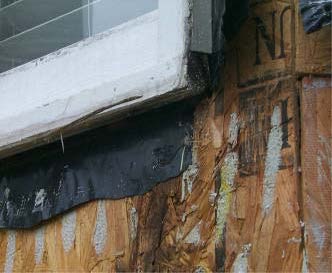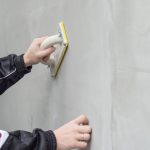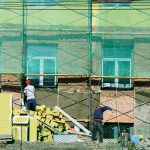
Three Reasons Why Windows Leak in All Cladding Systems

Reason 1— Poor Rough Opening Preparation

Many rough openings have no protection
Many rough openings have no protection from leaks from around or within the window. This photo shows where no moisture barrier is installed around the window, allowing moisture from perimeter and window leaks to drain directly into the wall.

Moisture from the miter joint
This photo shows the most common mistake made when preparing an opening for a window. The moisture barrier has been cut to wrap the corner at the miter joint. This is the most likely area of the window to leak. Moisture from the miter joint will run down the jack stud into the wall cavity. Also, if the rough sill is tilted toward the inside, then the moisture will drain to the inside, which is common.

This problem occurs on all homes
This is another example of cutting the moisture barrier at the sill/jamb location. This problem occurs on all homes, not just EIFS. Once the moisture makes it to the batt insulation inside the wall cavity, rot is highly likely. Also, moisture leaking in from perimeter joints will drain along the jack stud and into this area.

Damaging the OSB
The moisture pattern under the corner of this window is typical. However, it is important to realize that moisture is likely to be coming from inside the wall, damaging the OSB from the inside out. A secondary drain plane, like those found in most cladding systems won’t make any difference if the moisture never makes it to the drain plane.
Reason 2— Poor Window Design And Components

Rot can happen quickly
Many window manufacturers still use soft, untreated wood components in their windows. Once the moisture makes it to this wood, rot can happen quickly. This new window was installed in a $1 million home in 2003. The miter joint was already partially compromised at the time it was installed. The rough opening preparation is also inadequate.

Windows rot from the inside out
Untreated, finger-jointed wood is especially susceptible to moisture damage. Most of these windows rot from the inside out when moisture enters the window at the miter joint of the sill and jamb.

Leak right from the factory
Window sash tracks mounted against untreated wood without proper caulking are very common. This is the cause of most moisture problems in wooden double and single hung windows. These windows often leak right from the factory, but rough handling and poor installation compound the problem.

Cracks in the sill
Flat sills in wood windows direct the water to the most vulnerable part of the window: the miter joint. Flat joints in metal windows also direct the water to cracks in the sill or miter joint.
Reason 3— Improper or Missing Perimeter Sealing

Mullion can allow moisture entry
Mullions between two ganged windows are often poorly sealed. Breaches at the top of the mullion can allow moisture entry which drains to the wall cavity below.

Direct water away from the window
Head flashing designed to protect the top of the window and direct water away from the window is often missing. Barrier EIFS doesn’t require head flashing since there is no drain plane for the water to exit from behind the EIFS. However, a drip edge can help shed water from the upper window trim.

Improper joint design
Nearly all residential EIFS was installed without the use of manufacturer-recommended backer rod joints. This problem was compounded by the lack of even a fillet joint. Improper joint design and caulking material has contributed significantly to remediation failures.

Leaks at the glass pane
The glazing used to seal the glass to the window frame elements often fails in oversized, custom built windows, which are common to EIFS homes. Leaks at the glass pane often drain through the window construction and into the framing elements or wall cavity.

















Recent Comments